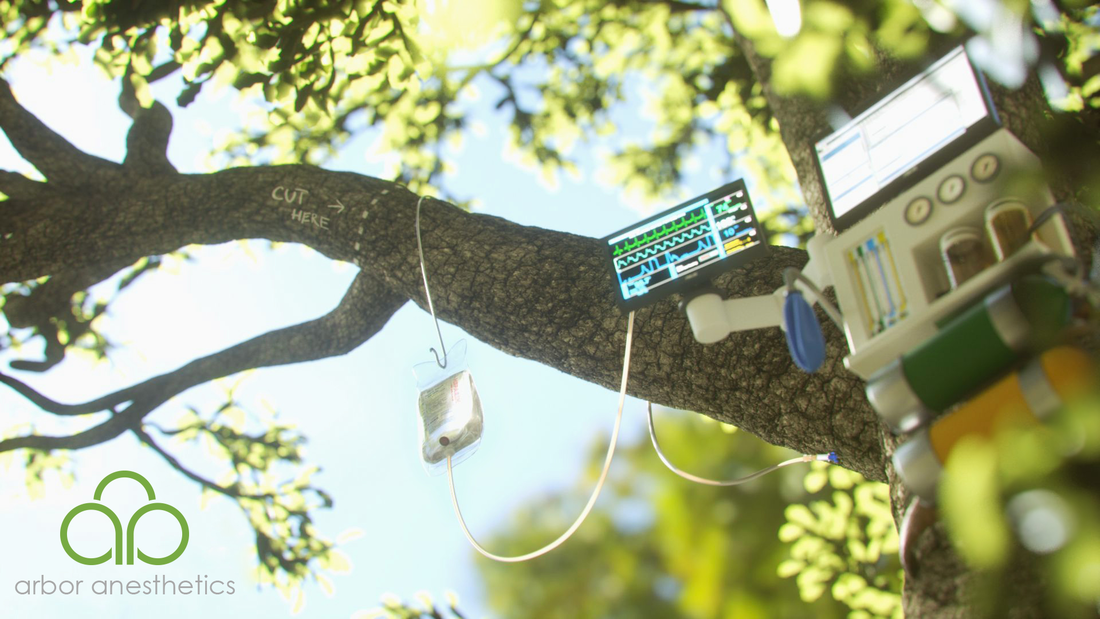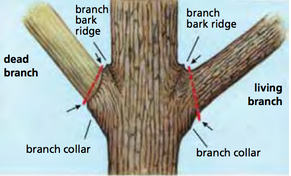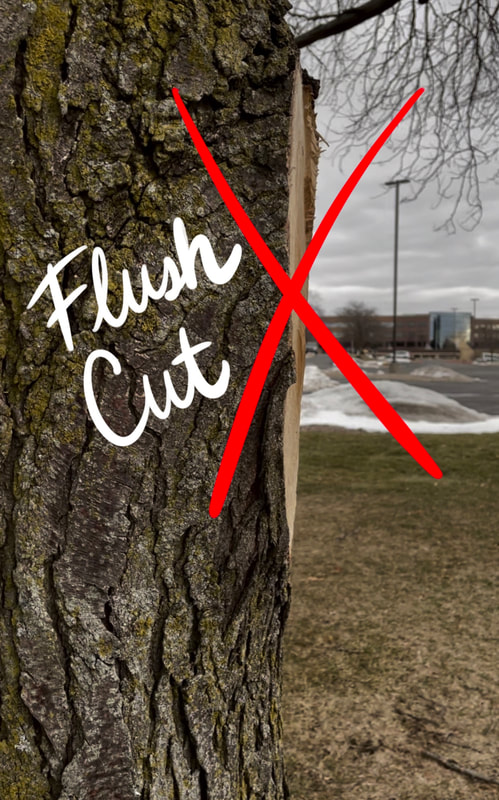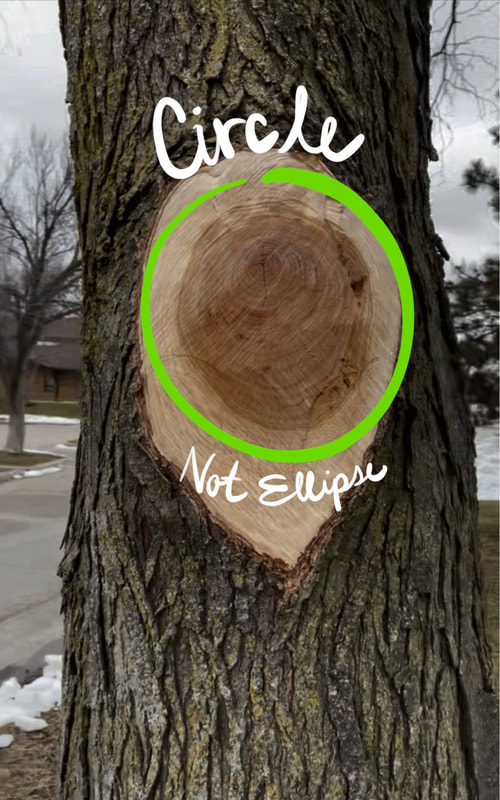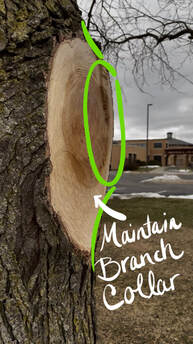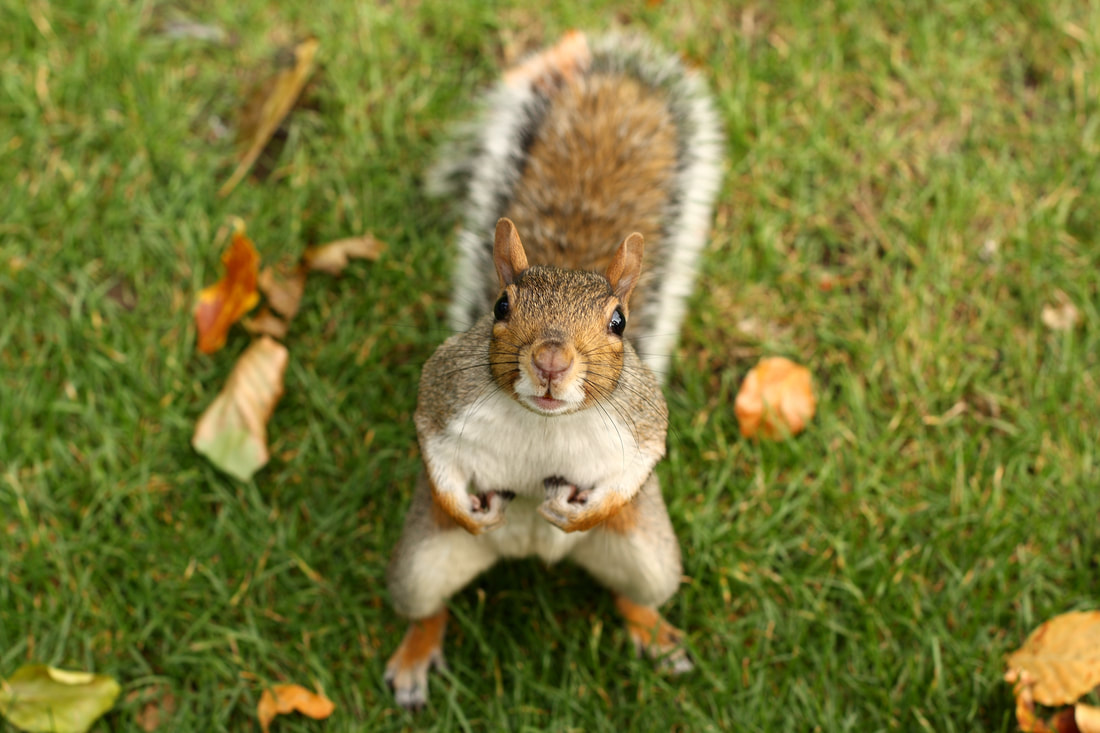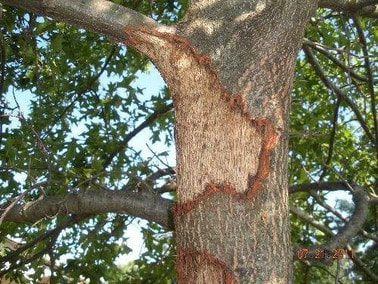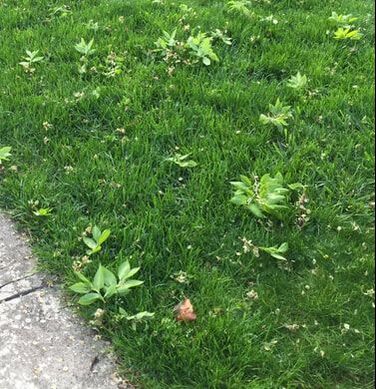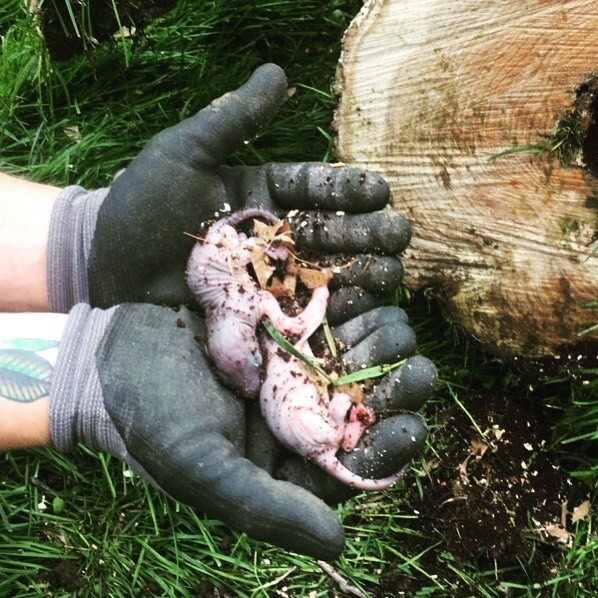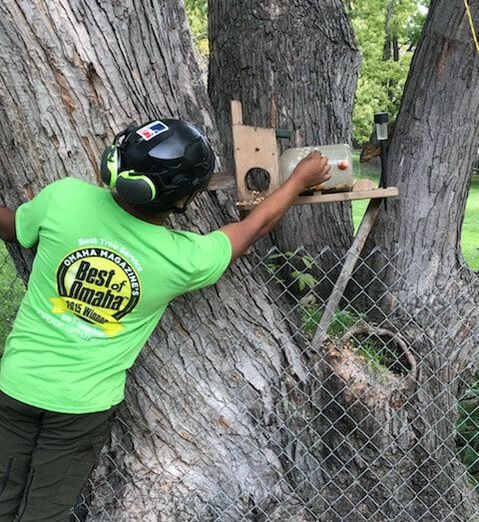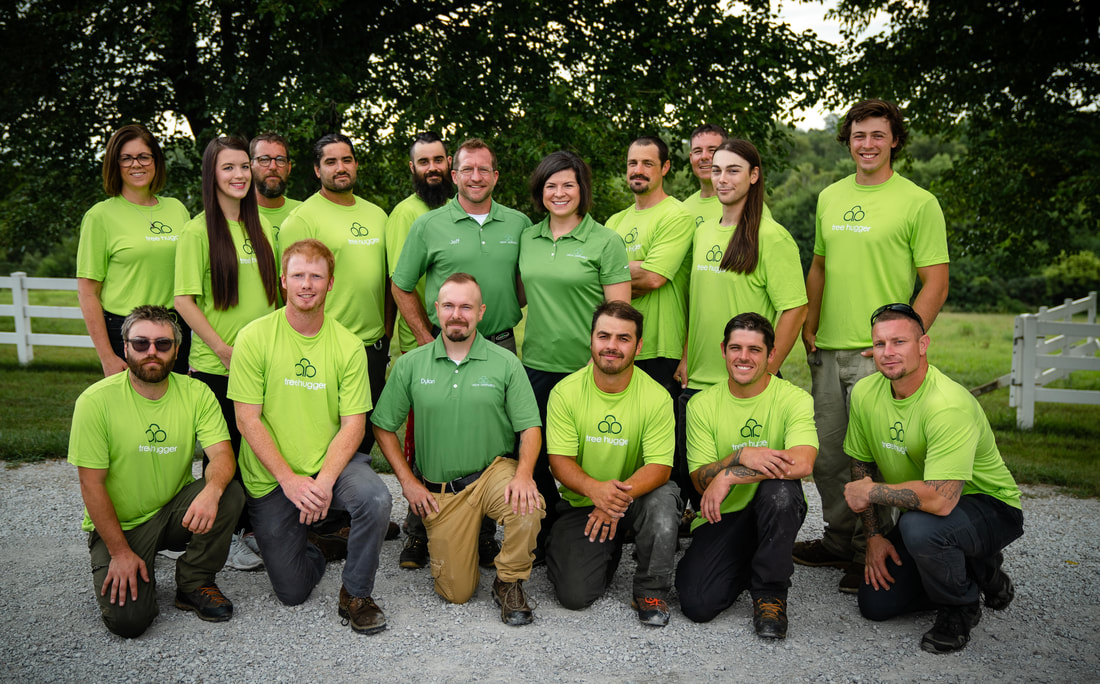Home » Articles posted by Brett Salles (Page 4)
Author Archives: Brett Salles
SAN DIEGO’S MOST ANNOYING TREE
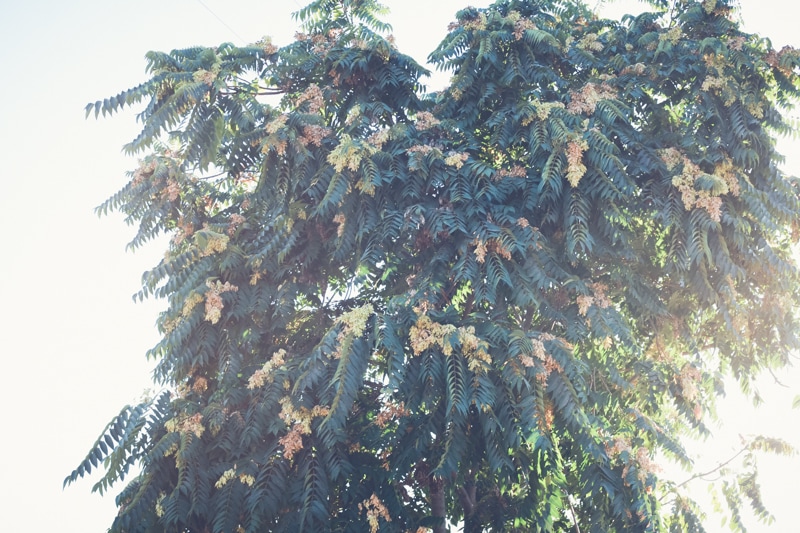


From the desert to the beaches, the mountains to the valleys, San Diego is a diverse city filled with a vast assortment of trees. With our sunny, mild climate, practically any tree can grow here with the proper care. In fact, most of the trees that you see aren’t even native to this region. All those palms — foreigners! Those eucalyptus trees that seem to be along every freeway and in every neighborhood — foreigners! Yes, only a few trees can actually call themselves true San Diego “locals.”
Some foreign trees making great additions to our San Diego terrain, but others are deemed invasive species that are detrimental to the native ecosystem or just plain annoying to people. What exactly is an invasive tree? Invasive plants are defined as “any indigenous or exotic plant species having a detrimental effect on the growth of commercial tree species, giving rise to particular management problems or growing where it is not wanted.” (Le Roux, 1981) So basically, it’s a foreign plant (which trees are considered to be plants) that people, as well as the natural indigenous ecosystem, have issues with.
Quite a few trees in San Diego are classified as invasive species, but some aren’t as bad as others. Many people wouldn’t even think about them being invasive, like the Canary Island date palm. This is a high-class invasive plant that is commonly added to landscape and can cost thousands of dollars. But some invasive trees aren’t as dignified as the date palm. In fact, there are areas of the world where they are strictly prohibited and required to be controlled or destroyed. So in our city, what unfortunate tree tops LC Tree Service’s list of San Diego’s Most Annoying Tree?
TREE-OF-HEAVEN
Ailanthus altissima

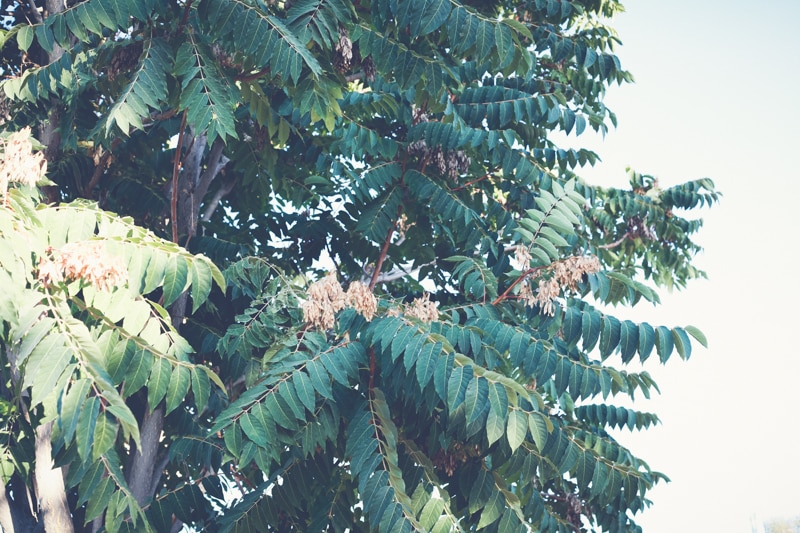
The tree-of-heaven! It has the most divine name, but don’t be fooled — it’s no angel. Originating from Asia, the tree-of-heaven is also known as Ailanthus altissima, or ailanthus for short. In urban areas where it be found growing in sidewalk cracks or along buildings, it has been dubbed the ghetto palm. Some may even call it the more appropriate name — the tree-from-hell. This is a tree that is notorious for evoking anger in any property owner who has even the most minute concern for their landscape. It’s a tree whose name you search on the internet, only to find an exhaustive list of negative articles that go on and on about how bad this tree is.
Why would one tree receive so much hate? The tree-of-heaven is practically a weed in tree form! Like a weed, you don’t need to plant them, they just pop up. And they keep popping up and taking over — unless proper protocol is taken. This tree species truly embraces the characteristics of an invasive plant. It spreads easily, grows quickly, pushes out the already existing plants, and is one of the hardest trees in San Diego to control. If left to unmanaged, it can quickly end up creating a widespread thicket that trumps over all other vegetation, thanks to its vigorous reproductive nature and toxic nature that inhibits the growth of other plants in its surroundings — sort of like the neighborhood tree bully.
At first glance, a mature tree-of-heaven, when manicured, can actually present itself as a good-looking tree that exhibits a tropical feel. It looks very similar to the mimosa silk trees that are as common in Hawaii as eucalyptus trees are in San Diego. It’s easy to envision the tree-of-heaven nestled among a handful of palms and some giant white bird of paradise plants at a beach resort. However, that would never happen because 1) we have never met anyone who intentionally planted a tree-of-heaven on their property and 2) no high-end resort or property would ever want this tree as part of their ornate landscape. To find a tree-of-heaven that has actually been trimmed is EXTREMELY rare. Most just end up growing wild and messy. As a tree service company, we typically find the tree-of-heaven growing in industrial or commercial properties where meticulous landscaping isn’t exactly high on the priority list. It is also common to see them on residential properties where an unfortunate homeowner thought they were bestowed with a free tree that sprouted up out of nowhere. So they let them grow, only to continue seeing more and more little trees spring up within a couple of years.
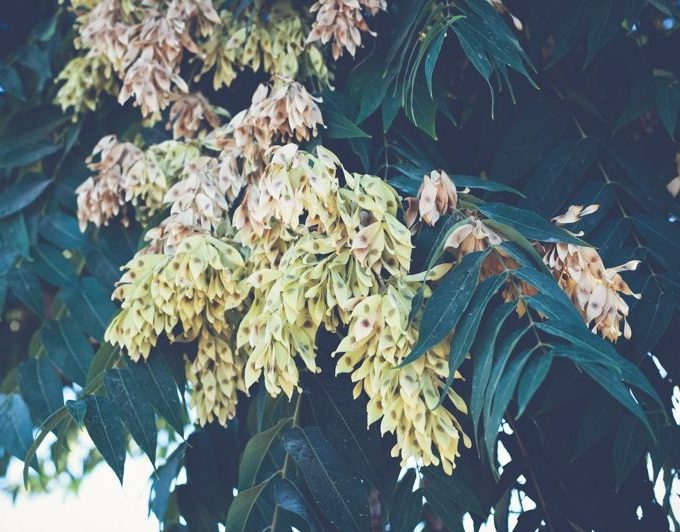

Tree-of-heaven cluster growing in a commercial property
Identification
The tree-of-heaven grows tall with a widespread, draping canopy of dark green leaves and pale brownish-pink clusters of what looks like flowers, but are winged seeds. It is similar in appearance to a few common ornamental trees in San Diego that also have the same pinnately compound leaf structure, such as the black walnut tree and Tipuana tipu. But there is an easy way to discern if it indeed is the tree-of-heaven. This is a tree that loves family! It is typically found in family clusters or colonies where there is a full-sized mother tree with her little baby trees in close proximity — and in systematic line, nonetheless. Sometimes a young tree-of-heaven can be found discreetly nestled among other trees and plants, and sure enough, if you look around, a mature tree can be found just a few houses down the street.
Mature trees can reach heights of 60 to 80 feet and are identifiable by their long pinnately compound leaves that can grow up to 4 feet long. These leaves have a central stem and two rows of 2- to 7-inch dark green pointed leaflets. The leaflets are fairly large with smooth edges, and when crushed, they give off a faint smell that some describe as 1) a mixture of citrus and skunk, 2) burnt rancid peanuts, or even 3) cat urine. If you spot one of these trees and are feeling adventurous, you can give its foliage a sniff, and see what you think. Citrus-y skunk? Burnt peanuts? Or cat urine?
The bark of the tree-of-heaven is light brown to pale grey when mature, and has grey branches that are smooth with raised dots which later mature into fissures. In the warmer months, yellowish-green flower clusters appear. But these flowers aren’t your typical blooms that you would want to add to a pleasant-smelling bouquet. They— just like the leaves — smell horrible!
Reproduction
The tree-of-heaven possesses a prolific nature and a tenacious survival attitude. It has the potential to cast out over 300,000 seeds annually that are brilliantly designed to fly. Each seed is conveniently tucked inside a winged seed pod called a samara that can easily travel long distances with the wind. But even with the millions of tree-of-heaven seeds that get dispersed throughout San Diego each year, they aren’t even necessary for propagation. Established trees also covertly shoot out lateral roots (roots that grow horizontally), which push out new sprouts down the line. That’s why you will typically find tree-of-heaven clusters growing in a straight line. If left unmanaged, these new sprouts rapidly grow into full-size trees with absolutely no human care. And even if the mother tree is cut down, these youngsters can still survive and thrive — even in the middle of a San Diego drought.
Adding to its aggressive reproductive nature, the tree-of-heaven also has the capability of dominating an area by inhibiting the growth of other plants. Present on all parts of the tree, but strongest on the bark and roots, is a toxic allelopathic chemical, called ailanthone, which poisons other neighboring plants or any new seed looking to join the neighborhood. In some studies, ailanthone extracted from the tree-of-heaven was even able to kill 100% of certain plant seedlings. I guess you could describe this species as an introverted passive-aggressive.


Management
While the tree-of-heaven may be surrounded by a plethora of negative attention, its resilience and refusal to go down without a fight is worth applauding. The tree-of-heaven has an amazing capability of survival. Unlike most trees you see around San Diego, if you mess with this tree, it fights back. No, it doesn’t slap you with its branches, but if you cut it or injure it…it knows! And in a survival response, it shoots out dozens of lateral roots underground to help “pass down the family genes.”
If you noticed that you have one of these “bad boys” creeping into your property, what do you do? Have no fear. There are methods to controlling them…which is just a nicer way of saying…annihilating them. Do not attempt to remove it yourself. The only exception would be if it is a brand new sprout that is the first of its kind in the area. If other tree-of-heavens are close by, pulling out a baby sprout would be pointless, because underneath is already an intricate root system that will simply replace what you took out.
The problem with attempting to remove a tree-of-heaven like a “normal” tree lies in the roots. You can take out the mother tree along with the stump, but in a few months, you’ll just see her little saplings lurking through the ground. Pull them out, and then a few months later, what do you know? More mini clones popping out from the ground! For the property owner, it’s a frustrating ordeal.
In order to successfully remove a tree-of-heaven, herbicide must be used to first kill the tree. However, this should be performed by a professional tree service company since a strong herbicide has to be used in order to effectively kill the tree. If other plant species are present, then extra precaution must be taken in order to avoid poisoning neighboring plants. Once the tree has deceased, the removal process can continue as normal.

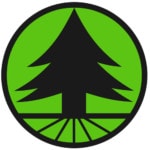
IN NEED OF A TREE-OF-HEAVEN REMOVAL?
Contact LC Tree Service today to set up a free on-site consultation. Serving all of San Diego County.
The post SAN DIEGO’S MOST ANNOYING TREE first appeared on San Diego Tree Trimmers – LC Tree Service.
COST OF TREE REMOVAL SERVICES
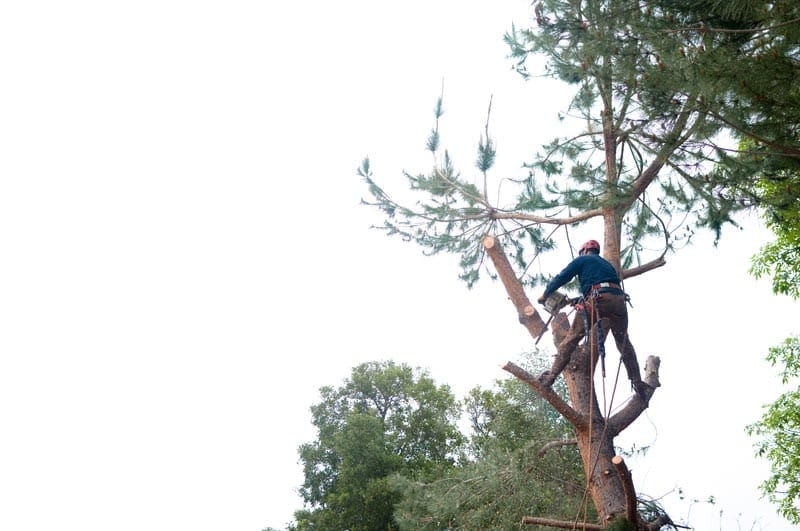
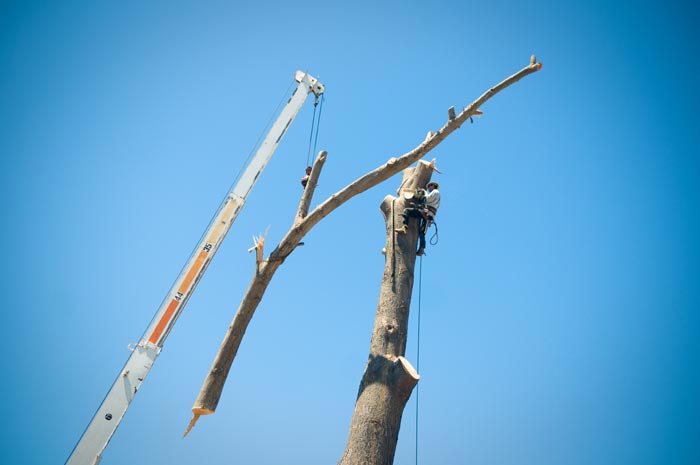
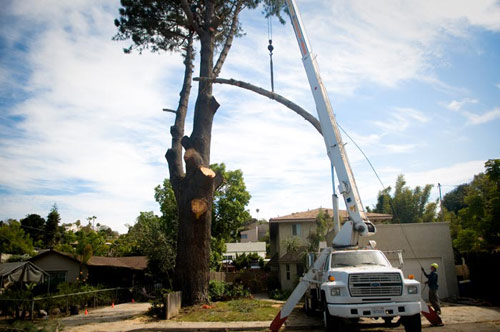
Tree removals vary widely in their size and difficulty. Because no two tree removal jobs are the same, providing a reliable quote without examining the tree and property in person is almost impossible. Too many factors influence the scope of the project, such as canopy density, trunk girth, and carrying distance to the chipper and truck.
While some homeowners may attempt a simple tree trimming, amateur tree removals can quickly go awry when the direction of the fall of limbs or the trunk is miscalculated. Unfortunately these errors can result in property damage or in bodily harm or death, in the most tragic cases. Only small tree removals can be deemed safe to be performed by an amateur, but even those small jobs can easily end up being an all-day Saturday project.
Tree removals jobs are time-consuming and dangerous to both people and properties. However, with proper equipment, our trained and skilled tree crew can remove trees of all sizes as safely as possible. No seasoned tree company can ever boast in never damaging property when performing a tree removal job — because the nature of the job is downright dangerous, more so with larger removals. It involves heavy limbs and trunks suddenly breaking away from their support source, and sometimes crashing to the ground. This is why it is important to hire a professional and licensed tree company with a good reputation and the proper machinery, in order to help alleviate any potential dangers.
WHAT FACTORS INFLUENCE TREE REMOVAL COSTS?
- Canopy density
- Trunk girth
- Tree or palm species
- Proximity of the tree to dump truck and chipper’s location
- Ease or difficulty of the terrain
- Number of trees
- Proximity to structures, fencing, or sensitive landscaping
- Proximity to hazards, such as electrical lines
- Emergency work that requires immediate action, especially during the company’s off-hours
HOW MUCH DO TREE REMOVALS COST?
Provided are price ranges depending on the tree’s height, however, the range is wide due to the preceding factors that influence the final cost.
- 30 ft or less = $100 – $500 per tree
- 30 ft – 60 ft = $200 – $1,500
- Over 60 ft = $1,500 or more per tree

COST EXAMPLES
To give a clearer understanding of what your tree removal can cost, here are some examples of removal jobs that are commonly incurred in Southern California. As with all jobs, the cost can be lower or higher depending on the different factors that determine the ease or difficulty in performing the removal.
- 50 ft Mexican fan palm with little or no dead palm frond skirt = approximately $800
- 50 ft Mexican fan palm with a 15 ft frond skirt = approximately $1,500
- 60 ft Eucalyptus with a base diameter of 24 inches = approximately $1,400
- 50 ft Canary Island pine = approximately $1,200
- 15 ft citrus tree = approximately $400
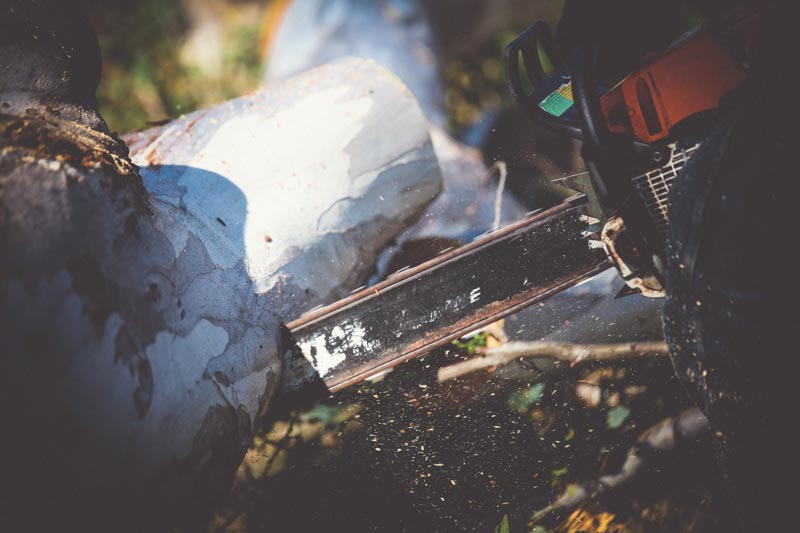
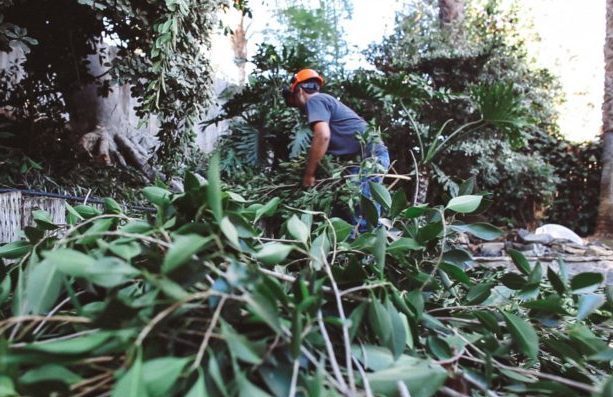
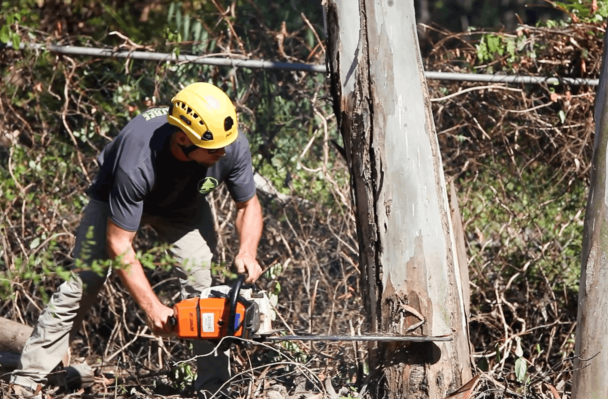
OPTIONAL STUMP REMOVAL
Tree removal jobs involve the removal of everything from the base of the trunk and upwards. On some jobs, the stump and roots are left to save on cost, but in most cases, they are removed to completely finish the project and prevent regrowth. For this reason, we always recommend having the stump removed along with the rest of the tree removal, but tree removals can be costly, so we understand when a client chooses to delay the stump removal for a later date.
As with any tree project, the cost for stump grinding varies greatly from as low as $50 for a simple, small stump to over $1,000 for larger stumps which are located on difficult terrain, such as a steep, hard-to-access slope.
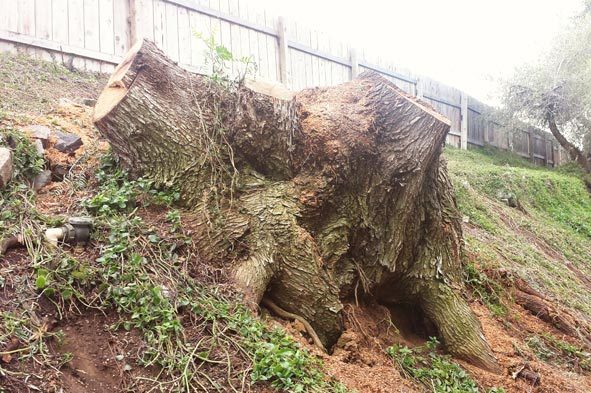
EMERGENCY TREE REMOVAL
Unfortunately, some trees can be very unpredictable. Even the most non-threatening tree can suddenly fall — sometimes resulting in a devastating aftermath. Due the sudden and urgent nature of emergency tree removals, the cost for these jobs tend to be higher than your average tree removal job. Changes need to quickly be made to our company schedule, crews need to be redirected or even regrouped in the middle of the night, and our tree specialists get to work as soon as possible to clear out the fallen trunks and limbs.
The following factors influence the final cost of an emergency tree removal.
- Urgency of the job
- Size of the fallen tree and material
- Odd working hours, such in the middle of the night or holiday
- Difficulty and sensitivity of tree location, such as fallen trees on power lines or through homes



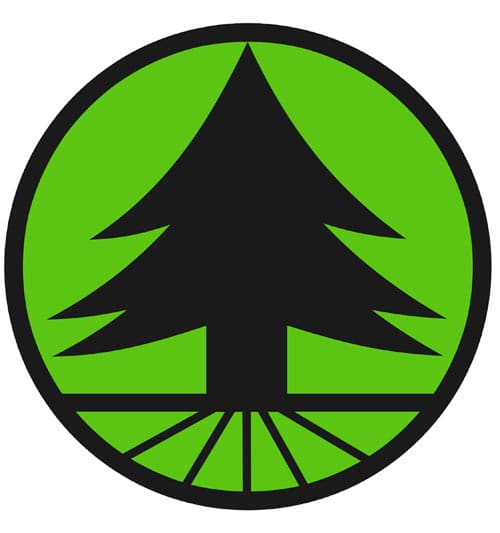
IN NEED OF A TREE REMOVAL?
Contact LC Tree Service today for your free consultation!
The post COST OF TREE REMOVAL SERVICES first appeared on San Diego Tree Trimmers – LC Tree Service.
Did you miss our previous article…
https://www.treesforeducation.com/?p=163
Creating Company Culture – TCIA Podcast Featuring Jeff & Amy Grewe
Did you miss our previous article…
https://www.treesforeducation.com/?p=160
Arbor Anesthetics – Innovative Pain Management Solutions for Tree Pruning
Here are FIVE ways you can prevent harm to your trees:
- Flush Cuts – Improper Pruning Techniques
- Mulch – but not too much!
- Will cutting into a tree’s roots harm the tree?
- DIY Tree Pruning
- Tree Topping Hurts
Don’t fool around with your trees! Hire a professional, Certified Arborist, like Arbor Aesthetics Tree Service!
Flush Cuts – Improper Tree Trimming Techniques
Trees have a response to wounding, coined “Compartmentalization of Decay in Trees” or “CODIT.” A tree “walls” off decay in four layers of bark tissue, preventing decay from moving vertically, radially and tangentially. When a wound occurs naturally, the tree gets to work using its own defense mechanism to keep decay-causing fungi from spreading. When a wound occurs during routine tree pruning (yes – it’s a still a wound!), a trained arborist can take steps to ensure the tree is given its best shot at using its CODIT system.
Maintaining the branch collar is critical in tree pruning and allows the tree to form a proper callus around the wound. The illustration to the right shows a clear swelling of tissue at the branch collar as the tree is preparing to shed a dead limb naturally. Trees know what they’re doing! When we prune live limbs, we can use this as a model for where to make our cut – by not cutting into the branch collar. The branch bark ridge is not always obvious, and when it is not easy to identify the collar, we consider it best practice to come away from the trunk slightly. It would be better to leave more of a stub than it would be to cut into the branch collar.
In general (and certainly not in all cases), a proper pruning cut will result in a circular wound or as close to a circle as possible. In the photos, you can see the elliptical shape of the cut where the flush cut was made parallel to the trunk, but not perpendicular to the branch, resulting in a vertical ellipse where we can see the branch collar was removed.
If you are unsure where you make a proper pruning cut, it’s best to consult a certified arborist. You can read more about DIY Pruning in a previous blog post.
- Compartmentalization of Decay in Trees, Bartlett Tree Experts
https://www.bartlett.com/resources/compartmentalization-of-decay-in-trees.pdf - University of Iowa Extension & Outreach
https://hortnews.extension.iastate.edu/faq/when-pruning-trees-it-desirable-make-flush-cuts#:~:text=Flush%20cuts%20are%20pruning%20cuts,collar%20and%20branch%20bark%20ridge.
Arbor Aesthetics Tackles Accreditation with Virtual Audit – Tree Care Industry Association Magazine
|
We are honored to be featured in the March 2021 issue of the Tree Care Industry magazine. Every March, the association dedicates the issue to the incredible leading women of the industry. This year, nine articles (over 40 pages!) featured women, which is a big deal for a male-dominated industry.
As everyone in tree care faces the challenges of working through a pandemic, some businesses actually seem to be thriving, as is the case with Arbor Aesthetics Tree Service, a seven-year TCIA member company based in Omaha, Nebraska. Certified Arborists and co-owners Amy and Jeff Grewe have watched their business grow exponentially over the past year, prompting them to make the decision to pursue TCIA’s Residential/Commercial Accreditation during an already busy and challenging season.
The couple met in 2013, the first year Jeff’s young tree care company became a TCIA member. “I knew nothing about trees when I met Jeff,” Amy notes. “He said he was a climber – I didn’t know climbing trees was even a profession! “My education is in graphic design, but I also had several years of bookkeeping experience,” she continues. “In 2014, I saw a bill from his accountant’s office, and I remember thinking, ‘Wow, that’s more than I make in a year!’ So we made the decision that I would quit my job and come on board full time in his office. I looked at his office processes, which were virtually non-existent, and I also started answering his phone during business hours for the first time ever, since he was always out working with his crew during the day.” Amy and Jeff were married in 2015 – “We were business partners before we were married,” she says with a laugh – and Amy became a Nebraska certified arborist in 2016. “I found I really enjoyed talking to customers about trees, but I needed to know what I was talking about. Jeff and I went to classes and workshops together, and I’ve grown to love being part of the industry. Tree people are good people, intelligent and caring.” As a woman co-leading a tree care company, Amy says she brings a unique perspective to the business. “I think I’ve been an organizational asset for sure,” she explains. “Also, I think women have a knack for anticipating people’s needs and managing people’s expectations, which plays into providing excellent customer service. I definitely brought a shift to a customer-centric approach to the business.” Amy also talks about instituting the company’s “Gift of Beautiful Trees” program, which she and Jeff launched in 2015. Every year since then, the couple has chosen a deserving family to receive up to $3,000 in tree-trimming and/or removal services. “Proper tree care can be expensive for the average person,” Amy explains, “so we began asking for nominations of families or neighbors who might not have room in their budget for tree care. It’s really amazing to me that something as simple as trimming or removing a tree can provide so much hope and change the trajectory of someone’s life when they are living through a challenging season. It lets people know that their community is there for them in their time of need. They feel seen.” An important aspect of Arbor Aesthetics becoming accredited was instituting a formal training program. Now every new hire is put with a crew leader they can go to if they have questions and who becomes their mentor. This may be one of the reasons Omaha Magazine has named Arbor Aesthetics Tree Service as its “Best of Omaha” tree service for the sixth consecutive year. When it came time to consider Accreditation, Amy relates that the process happened in fits and starts. “We first looked into Accreditation at the 2015 Winter Management Conference in Cabo,” Amy explains. “But then we got married right after Winter Management and had a baby the next year, and I just didn’t have the time I knew it would take to devote myself to doing it right. When we started growing and getting really busy, I knew we needed to have more processes in place or this whole thing was going to fly off the tracks. “I’m not going to sugarcoat it – I was totally overwhelmed when I first looked at the process. But I put up a huge white board in the office and broke it out into tiny, tiny pieces, so that every day I could check something off the list and maintain momentum. “A good friend of ours, Joseph Eves at Coastal Tree Care in San Diego, also is accredited, and he told me I had to find a way to enjoy the Accreditation process. Can you imagine?” Amy says with a laugh. “I’m very detail oriented, so the biggest hurdle for me was to realize that it was better to call it done than to strive for perfection.” According to Amy, who says it was about six months of “pedal to the metal” to complete the process, implementing a safety program was the biggest challenge. “I really wanted it to be specific to our company, not just something adopted from someone else’s program. Not having field experience made it especially challenging to me. I would ask Jeff my safety questions, and he would help me figure out what I needed. As a result of Accreditation, we realized we had a dire need for a safety director, and Matt Horan got his CTSP credential as a result and was more than happy to step into that role.” Arbor Aesthetics now has what Amy calls a “peer-to-peer safety program” with weekly safety tailgate meetings led by crew members. One artistic team member drew comics illustrating the topic of distracted drivers, and another put together a PowerPoint on the subject of aerial-lift safety. “We think the best way to learn is by teaching,” Amy notes. Another important aspect of becoming accredited, according to Amy, was instituting a formal training program. “We found this particularly helpful. Now every new hire is put with a crew leader, so they know who to go to if they have questions. The crew leader becomes their mentor, and they are given expectations from the get-go.” Jeff Grewe with one of the company vehicles. DOT compliance was one of the areas Arbor Aesthetics was able to improve on as part of the Accreditation process, according to Amy Grewe.Her biggest surprise, notes Amy, was the section pertaining to CDL drivers. “I didn’t know anything about DOT random drug-testing requirements, and that part was sort of confusing to me. We also weren’t compliant with the DOT’s daily vehicle inspections – that part was new to me. Now everything is documented. I have no doubt that the documentation we have now could potentially save lives.” Arbor Aesthetics was one of the first companies to go through a virtual audit process, which Amy says went quite smoothly. “We had about a two-hour Zoom meeting. I think I was probably over prepared, but that’s just my personality. I also needed to send photos of things like proper aerial-lift use, climbers having two tie-in points, proper PPE and safe roadside setup.” When asked whether she thinks Accreditation is of value, Amy notes, “Anyone who is uncertain whether becoming accredited is a good investment should know that the return on your investment of time and energy will pay itself back in dividends. We should have implemented a lot of these things years ago. This is an opportunity to step back, zoom out and look at how all aspects of your business are working, or not working, together. It’s an opportunity to design your company again from the ground up and put it to paper. “I see an attitude shift in our company in that we’re doing these things not just to check boxes,” she continues. “We see the big picture, and we value the processes that have been put in place to hold each other accountable, protect each other, communicate our vision across the organization and ultimately provide an unbeatable experience that our clients can feel and appreciate.” |
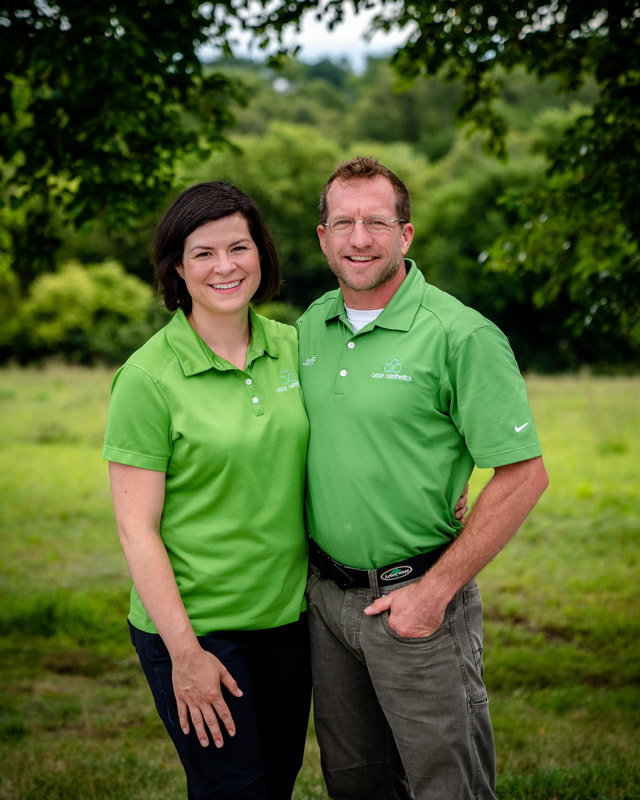
Jeff & Amy Grewe, owners
|
Squirrels & Trees, Love & Hate.
|
Today is Squirrel Appreciation Day! Squirrels are easy to love for their cunning personalities and cuteness, but they can just as easily become a nuisance when they turn to your trees for nutrition and habitat. Nevertheless, squirrels play an important role in our ecosystem and we can learn to coexist in harmony!
|
Bark stripping
Research indicates that bark stripping has a higher occurrence following a “mast year” where trees produce a bumper crop of fruits and seeds, which may correlate with a higher population of juvenile squirrels. Here is an excellent article from Ohio State University about bark stripping.
EATING TREE BUDS
tree trimming to protect young squirrels
|
In the United States, it’s best to trim your trees between November and January to avoid nesting seasons. Of course, if the tree trimming must take place during nesting, our arborists are careful not to disturb nests. Plenty of foliage should be left around the nests for their protection from predators and the elements.
Keeping squirrels out of your houseAre squirrels finding their way into your home? They can easily jump up to 10 feet from a tree onto your roof and find their way into attics, crawl spaces and chimneys to seek warmth and protection. Let your arborist know if your objective is to prevent this from happening and your tree can be trimmed to clear the house by more than 10 feet. Of course, our best advice is to find where the squirrels are entering and secure the openings.
|
Did you miss our previous article…
https://www.treesforeducation.com/?p=141
Arbor Aesthetics Featured in Midland’s Business Journal
|
Check us out in the Midlands Business Journal talking about our growth in 2020 and our future plans. Regarding our customer experience, Jeff says, “From the first phone call into the office to the last twig raked from the yard, it is a beautiful experience because it is just so unbelievably the way it is supposed to be. It is friendly, it is timely, and there is communication all the way through.”
READ HERE: 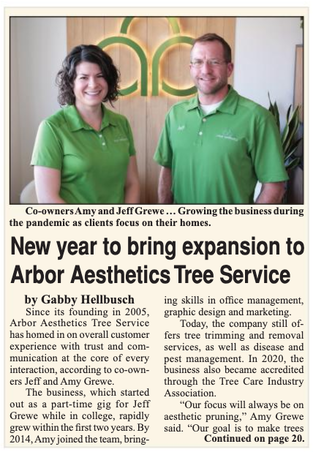
|

|
Did you miss our previous article…
https://www.treesforeducation.com/?p=137
Arbor Aesthetics earns Accreditation by the TCIA
|
OMAHA TREE CARE COMPANY BECOMES SECOND IN NEBRASKA TO EARN ACCREDITATION
Program helps consumers find high-quality tree care companies Arbor Aesthetics Tree Service, a residential tree care company located in Omaha, Nebraska has been accredited under a new Tree Care Company Accreditation program administered by the Tree Care Industry Association (TCIA) and built on the threefold foundation of ethics, quality, and consumer confidence. The new program represents the only business practices and compliance audit process in the tree care industry. Under the process, businesses undergo extensive review of professional practices aimed at safeguarding consumers. The review includes: ► best business practices ► ethical business conduct ► formal training and certification of employees ► compliance with industry standards ► consumer satisfaction ► adherence to safety standards ► insurance coverage TCIA Accreditation means Arbor Aesthetics adheres to all the accreditation standards and has undergone a rigorous application process. TCIA verified this by conducting an on-site audit of Arbor Aesthetics. TCIA Accreditation for Arbor Aesthetics is in effect for a period of three years, with renewal check-ups required every year. The annual renewal ensures that the required number of certified arborists are still on staff, that the company is still properly insured and that the company has a good safety and consumer satisfaction rating. The company is re-accredited every three years. According to TCIA president Mark Garvin, “TCIA Accreditation provides consumers a way to find tree care companies that are trustworthy in their business and tree care practices. Our TCIA Accreditation program is the only one of its kind in America and will give consumers peace of mind.” The process of becoming accredited is no easy task, according to Amy Grewe, President. “The process is incredibly thorough. They left no stone unturned,” states Grewe. “Jeff and I are pleased that in our 15th year in business, we have finally been recognized as one of the best tree care companies around, joining only one other accredited company in Nebraska. Garvin echoes that sentiment. “Arbor Aesthetics has made a commitment to excellence in all facets of its business. I applaud their efforts.” |

|
What is the best mulch to stop weeds?
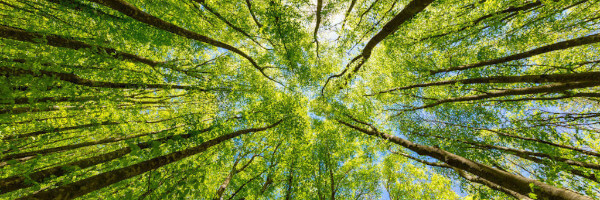
Maintaining a garden is a labour of love. But sometimes the time and effort involved can be challenging to keep up. That’s why many homeowners today look for ways to make gardening easier. Low maintenance solutions like automatic sprinklers and composting systems are just the beginning.
One of the most challenging tasks for maintaining a garden involves weed removal. Weeds can be difficult to find and remove. Even when you least expect it, there could be seeds from weeds spreading around your garden beds. These seeds could be laying dormant until conditions are right for them to start thriving in your backyard.
Weeds are often the cause of many frustrations and issues in the garden. To help you manage weeds and keep them under control, let’s explore one of the most effective methods for stopping them—adding mulch to your garden beds.
Why mulch is a great option for weed control
When you apply mulch to your garden beds you are giving your soil a protective layer. A layer of mulch effectively blocks out the sunlight and prevents it from hitting your garden’s soil. Keep this in mind as we go through how weeds end up in your garden.
Weeds tend to spread when their seeds drop and get deposited into the soil. They can quickly multiply and spread throughout your garden in no time when growing conditions are favourable for them. Luckily, one of the most essential ingredients that help the seeds of a weed grow is nourishment from the sun.
So if you effectively block out sunlight hitting your soil, you take away a major food source for the seeds of the weeds to grow. Photosynthesis can longer occur which helps give weeds the nourishment they need to grow.
How mulch can help other plants thrive
One of the major benefits of laying down mulch is the protection it provides for the rest of the plants in your garden beds. During hot and dry seasons, mulch can help retain moisture in your soil. So long after your garden beds have been watered, the mulch will retain water and keep the soil moist.
This moist environment underneath your mulch will continue to help your plants thrive in more ways than one. Mulch can also help regulate temperature. In colder climates, the mulch is also effective at retaining heat. This form of temperature control contributes to a warm environment that helps your plants thrive well before Spring kicks in.
By now you’re probably wondering why mulch doesn’t hamper the growth of your other plants if that’s what it does to weeds. The truth is, you have to have well-established plant seedlings in place before laying down mulch. This ensures your seedlings sit above the mulch so they can still absorb nutrients and energy from the sun via photosynthesis.
Mulching on a budget
Your gardening budget can definitely help you narrow down your options for garden mulch. If you don’t want to fork out money for it, there are several free options you can rely on. If you regularly prune your garden you may already have a collection of twigs and small branches lying around. These can be perfect options for your garden mulch.
Fallen leaves from the trees in your yard are also a great option. But depending on the type of leaves you choose they may compost a lot faster than your standard mulch. Other free options to consider are sawdust or wood chips leftover from any work you’ve done in the garage. If you own a big lawn at home you may also appreciate that grass clippings from lawn mowing can also be used for mulch.
Choosing the best mulch for your needs
Choosing the best mulch to stop weeds in your garden really depends on your maintenance needs and what you’re trying to grow in your individual garden beds. Ideally, you want a mulch that can block out light from your soil. That’s the most important thing to consider when choosing the best mulch to stop weeds.
The free options we mentioned earlier like leaves and grass clippings are great but they can decompose a lot faster than other varieties. Wooden chips and mulch are popular options for several reasons. They don’t decompose quickly. They can last for months or well over a year before they start to deteriorate. One of the disadvantages of wooden mulch and chips is that because they don’t break down as fast, they won’t enrich your soil and provide your plants with nutrients.
A great solution we’ve found is using a combination of compatible mulch like leaves, grass, and hay with wooden mulch laid on top of it. This option gives you the best of both mulches. You’ll get the nutrients from the breakdown of leaves and other organic matter combined with the long-lasting surface protection of wooden mulch.
Get your next batch of garden mulch from Daryl’s tree care
Do you have a few trees that need to be removed from your garden? If so, we’ve got some great news for you. These trees can be turned into mulch that you can use directly in your garden. As part of our tree removal service, we offer mulching. So the branches, tree stump and log from your tree can be placed straight into our wood chipper where it’s turned into wooden mulch.
Even if you’re not getting any tree removed, we can still supply and deliver tree mulch straight to your yard. But you will have to be patient. Our wooden mulch only becomes available for jobs that require trees to be processed through a wood chipper.
So contact us today and we’ll gladly let you know when the next load of wooden mulch will be available for you to buy. Leading up to the day when we process a tree, we’ll let you know and arrange a day and time for your mulch delivery.
The post What is the best mulch to stop weeds? appeared first on Daryl's Tree Care And Surgery.

